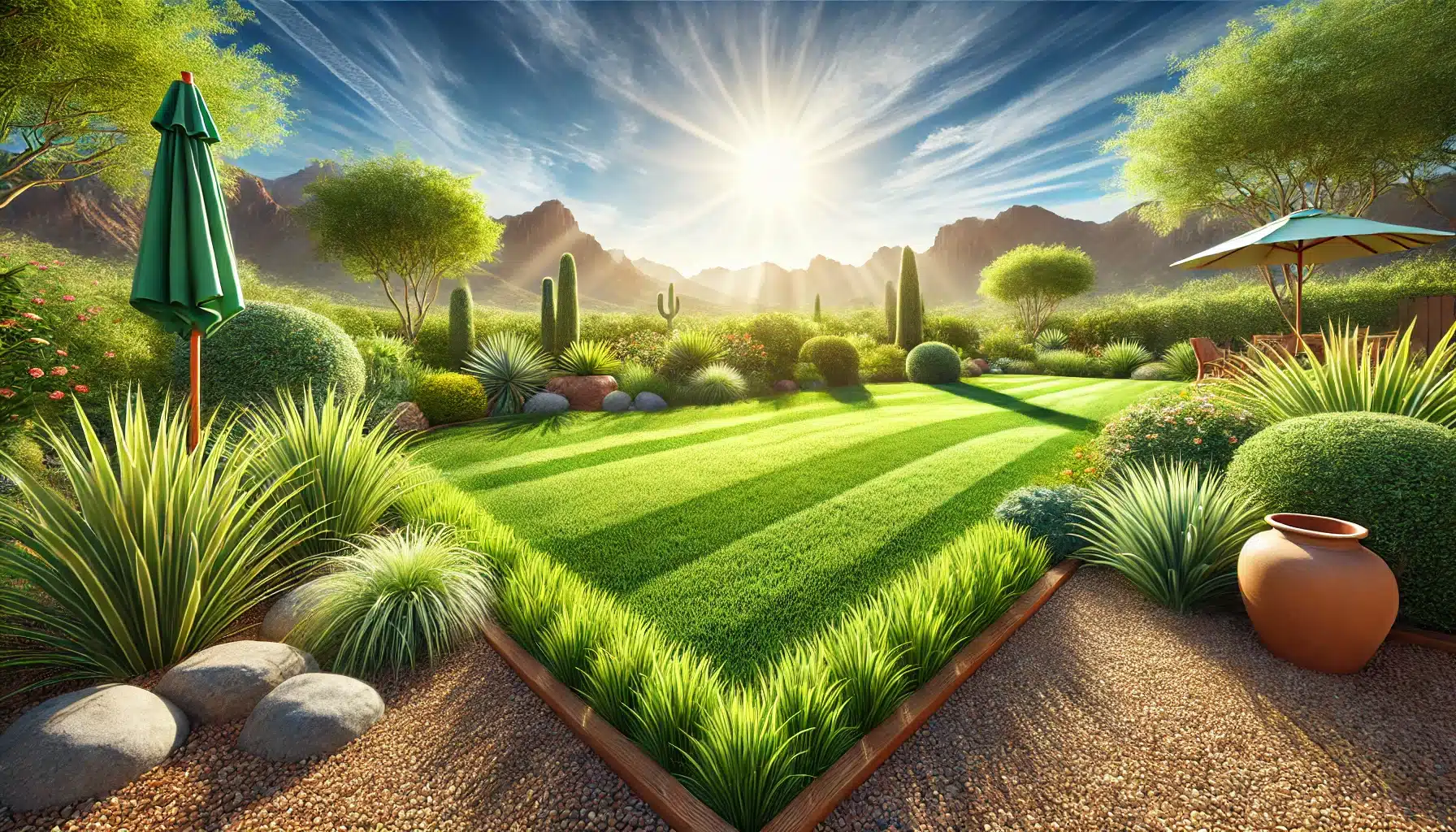When it comes to maintaining a beautiful and sustainable lawn in Arizona, choosing the right grass type is crucial. The unique climate, characterized by intense heat and low humidity, can be challenging for many grass species. However, certain varieties thrive in these conditions, offering resilience and beauty to your landscape. In this blog post, we’ll explore the three best grass types for Arizona lawns, helping you make an informed decision for your yard.
Contents
Understanding Arizona’s Climate
Before diving into the best grass types, it’s essential to understand the specific challenges posed by Arizona’s climate. The state experiences:
- High temperatures: Summers can reach over 100°F.
- Low humidity: Dry conditions are typical, especially in southern Arizona.
- Limited rainfall: Water conservation is important due to infrequent rain.
- Soil conditions: Often alkaline and low in organic matter.
Given these factors, selecting grass that can withstand heat, drought, and poor soil is vital for a thriving lawn.
1. Bermuda Grass
Characteristics
Bermuda grass is a popular choice for Arizona lawns due to its exceptional heat tolerance and durability. It’s a warm-season grass that flourishes in hot climates.
- Growth habit: Dense and fine-textured.
- Color: Rich green during the growing season.
- Maintenance: Requires regular mowing and fertilization.
Benefits
- Heat tolerance: Thrives in temperatures up to 110°F.
- Drought resistance: Deep root system allows it to survive with minimal water.
- Wear resistance: Ideal for high-traffic areas like playgrounds and sports fields.
Maintenance Tips
- Mowing: Keep it at 1-2 inches tall.
- Watering: Deep watering once or twice a week.
- Fertilizing: Apply a balanced fertilizer in spring and summer.
2. St. Augustine Grass
Characteristics
St. Augustine grass is another excellent option for Arizona lawns, particularly in areas with some shade. It’s known for its broad blades and vibrant color.
- Growth habit: Thick, coarse blades.
- Color: Dark green and lush.
- Maintenance: Moderate, with occasional dethatching.
Benefits
- Shade tolerance: Performs well in partially shaded areas.
- Heat resistance: Can withstand high temperatures.
- Salt tolerance: Good for regions with salty soils.
Maintenance Tips
- Mowing: Maintain at 2.5-4 inches in height.
- Watering: Water deeply but infrequently.
- Fertilizing: Use a nitrogen-rich fertilizer during the growing season.
3. Zoysia Grass
Characteristics
Zoysia grass is renowned for its adaptability and low maintenance needs. It’s a versatile choice that handles Arizona’s climate with ease.
- Growth habit: Dense and soft texture.
- Color: Light to medium green.
- Maintenance: Requires less mowing and fertilization compared to other types.
Benefits
- Drought tolerance: Maintains green color with minimal watering.
- Heat resistance: Thrives in hot conditions.
- Pest resistance: Naturally resistant to many common lawn pests.
Maintenance Tips
- Mowing: Keep it at 1-2 inches tall.
- Watering: Water deeply but less frequently.
- Fertilizing: Apply a balanced fertilizer in early spring and mid-summer.
Comparison of Grass Types
To help you decide which grass is best for your Arizona lawn, here’s a quick comparison:
- Bermuda Grass
- Heat Tolerance: Excellent
- Drought Resistance: High
- Maintenance: High
- St. Augustine Grass
- Heat Tolerance: Good
- Drought Resistance: Moderate
- Maintenance: Moderate
- Zoysia Grass
- Heat Tolerance: Very Good
- Drought Resistance: High
- Maintenance: Low
Tips for a Healthy Arizona Lawn
No matter which grass type you choose, proper lawn care practices are essential to maintaining a healthy and vibrant lawn in Arizona. Here are some general tips:
Watering
- Early morning: Water your lawn early in the day to reduce evaporation.
- Deep watering: Encourage deep root growth by watering deeply and infrequently.
Mowing
- Sharp blades: Use sharp mower blades to avoid tearing the grass.
- Correct height: Maintain the recommended height for your grass type.
Fertilizing
- Seasonal application: Apply fertilizers at the right time of year for optimal growth.
- Balanced nutrients: Use a balanced fertilizer to provide essential nutrients.
Soil Health
- Aeration: Aerate your lawn annually to reduce soil compaction.
- Organic matter: Add compost or other organic matter to improve soil structure.
Common Lawn Problems in Arizona
Even with the best grass types and proper care, Arizona lawns can face specific challenges. Here are some common issues and how to address them:
Thatch Buildup
- What is it?: A layer of dead grass and roots that can prevent water and nutrients from reaching the soil.
- Solution: Dethatch your lawn regularly, especially for St. Augustine grass.
Weed Infestation
- Common weeds: Crabgrass, dandelions, and Bermuda grass in non-Bermuda lawns.
- Solution: Use pre-emergent herbicides in early spring and maintain a healthy lawn to outcompete weeds.
Pest Problems
- Common pests: Grubs, chinch bugs, and armyworms.
- Solution: Apply appropriate pesticides and encourage natural predators.
Conclusion
Choosing the right grass type for your Arizona lawn can make all the difference in achieving a lush, green landscape that stands up to the state’s harsh climate. Bermuda, St. Augustine, and Zoysia grasses are all excellent options, each with unique benefits and care requirements. By understanding your lawn’s needs and implementing proper maintenance practices, you can enjoy a beautiful yard year-round.
Ready to transform your lawn? Request a Free Quote from Red Mountain Landscaping today and let our experts help you create the perfect outdoor space.




